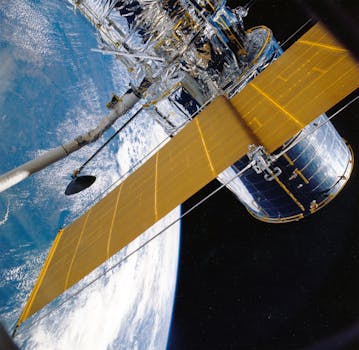The Future of Satellites: Revolutionizing Global Connectivity
The future of satellites is rapidly evolving, with advancements in space technology and increasing demand for global connectivity. This article explores the latest developments and trends in the satellite industry, including the rise of small satellites, satellite constellations, and the impact of 5G and 6G networks.

The Future of Satellites: Revolutionizing Global Connectivity
The future of satellites is revolutionizing global connectivity, and it all starts with the future of satellites. With the increasing demand for high-speed internet and reliable communication networks, the satellite industry is experiencing a significant transformation. In this article, we will delve into the latest developments and trends in the satellite industry, including the rise of small satellites, satellite constellations, and the impact of 5G and 6G networks.
Introduction to the Future of Satellites
The use of satellites for communication, navigation, and remote sensing has been around for decades. However, the traditional satellite industry has been dominated by large, geostationary satellites that are expensive to launch and maintain. The advent of small satellites, also known as cubesats or nanosats, has disrupted the industry, offering a more affordable and efficient alternative. These small satellites are designed to be smaller, lighter, and more cost-effective, making them an attractive option for companies and organizations looking to establish a presence in space.
The Rise of Small Satellites and Satellite Constellations
The rise of small satellites has led to the development of satellite constellations, which are networks of satellites that work together to provide global coverage. These constellations are designed to offer high-speed internet, communication services, and remote sensing capabilities. Companies such as SpaceX, OneWeb, and Amazon’s Kuiper Systems are leading the charge in developing these constellations, with plans to launch thousands of small satellites into low Earth orbit (LEO) over the next few years. The impact of these constellations will be significant, enabling global connectivity, improving communication services, and providing valuable insights into our planet and its resources.
The Impact of 5G and 6G Networks on the Future of Satellites
The roll-out of 5G networks has already started to transform the way we communicate and access information. The next generation of wireless networks, 6G, is expected to take this to the next level, offering even faster speeds, lower latency, and greater connectivity. The future of satellites will play a critical role in the development of these networks, providing the necessary infrastructure for global coverage and connectivity. Satellite-based 5G and 6G networks will enable the creation of smart cities, autonomous vehicles, and other innovative applications that rely on high-speed, low-latency communication.
Conclusion and Future Developments
In conclusion, the future of satellites is rapidly evolving, driven by advancements in space technology, increasing demand for global connectivity, and the rise of small satellites and satellite constellations. As the industry continues to develop, we can expect to see significant improvements in communication services, remote sensing capabilities, and global coverage. The impact of 5G and 6G networks will be substantial, enabling new applications and use cases that rely on high-speed, low-latency communication. As we look to the future, it is clear that satellites will play a critical role in shaping the world of tomorrow, and it all starts with the future of satellites.